Graphics Reference
In-Depth Information
Definition.
Let a = (a
ij
) be an n ¥ n matrix. The
determinant
of A, denoted by det(A)
or |A|, is defined by
Â
()
=
(
()
)
det
A
sign
s
a
a
◊◊◊
a
nn
.
(
)
(
)
(
)
11 2 2
s
s
s
s
Œ
S
n
Let M
ij
denote the (n - 1) ¥ (n - 1) matrix obtained from A by deleting the ith row
and jth column. The determinant of M
ij
is called a
minor
of A. The
ijth cofactor
of A,
A
ij
, is the signed minor defined by
=
()
+
ij
A
1
M
.
ij
ij
The n ¥ n matrix (A
ij
) of cofactors is called the
adjoint matrix
of A and is denoted by
adj(A).
C.3.1. Theorem.
The determinant function satisfies the following properties:
(1) det A
T
= det A.
(2) If the matrix B is obtained from the matrix A by interchanging two rows,
then det B =-det A.
(3) If a matrix A has two identical rows, then det A = 0.
(4) If a matrix A has a row of zeros, then det A = 0.
(5) Assume that the matrices A, A¢, and A≤ are identical except for the ith rows
A
i
, A¢
i
, and A≤
i
, respectively. Assume further that A
i
= aA¢
i
+ bA≤
i
. Then
det
Aa
=
det
A b
¢ +
det
A
¢¢
.
(6) det AB = (det A)(det B).
(7) det A
-1
= 1/(det A).
(8) The determinant of a matrix is sometimes usefully computed by means of
“expansion by minors,” that is, if A = (a
ij
) and if A
ij
is the ijth cofactor of A,
then
n
n
ÂÂ
1
Aa A a A
=
=
.
ij
ij
ij
ij
j
=
i
=
1
(9) The
inverse
A
-1
of a matrix A is defined by the equations AA
-1
= A
-1
A = I. It
can be computed by means of the determinant and the adjoint matrix, that
is,
1
-
1
A
=
adj A
.
A
(10) A matrix has an inverse, or is
nonsingular
, if and only if it has a nonzero
determinant. (A matrix without an inverse is said to be
singular
.)
Proof.
See [Lips68].



